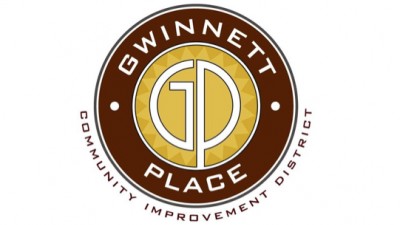More Than Traffic Lights And Turn Lanes: Gwinnett Place Is Open For Development

Drivers and pedestrians exploring Gwinnett Place this spring will notice more than a few changes.
Traffic flows more efficiently thanks to new intersection improvements and a data-backed responsive traffic system. Dozens of freshly planted trees are shading miles of new sidewalk.
These transit and beautification initiatives are not just improvements for their own sake. They are part of a mission led by the Gwinnett Place Community Improvement District to build a new, more livable community. As commercial hubs across the nation pare back retail efforts in favor of vibrant, mixed-use residential, commercial and cultural districts, Gwinnett Place CID Executive Director Joe Allen said Gwinnett Place is leading the trend in Atlanta.
“We want Gwinnett Place to be recognized as the flourishing center of a diverse, livable, walkable, sustainable urban community,” Allen said. “As we grow as a destination, there are huge opportunities here for developers to get in on the ground floor in the next development process.”
In 2018, the Gwinnett Place CID partnered with Gwinnett County to make improvements to Pleasant Hill Road, the community’s largest thoroughfare, including the addition of turn lanes at the intersection with Club Drive as well as new curbing, landscaping and pedestrian plazas.
The CID has also partnered with the Gwinnett County and Georgia departments of Transportation to rework the area’s major highway intersections and recalibrate the timing of its traffic lights, with the goal of alleviating congestion and improving traffic flow to many of Gwinnett Place’s major businesses. The traffic signals in the area now respond to sudden changes in traffic volume.

The CID’s 2018 annual report details these improvements while laying out their larger purpose: to turn Gwinnett Place into a live-work-play destination.
“If you drive around Gwinnett Place in the mornings and evenings now, you’ll see people walking to and from work or visiting the thousands of businesses,” Allen said. “There are a host of apartments and single-family homes around the commercial district, and as we reach a critical mass of residents, we’re moving into the next phase of growth.”
Allen cited a number of former shopping centers around the country that have been successfully repositioned as lively cultural destinations. Urban planning remade a derelict mall outside of Denver into a popping commercial and cultural town center under the new name Belmar. Houston’s Town and Country Mall became CityCentre, turning a concrete husk from the early 1980s into an office-retail-residential destination.
“Back in the 1970s and 1980s, malls were the center of the universe,” Allen said. “Like its peers throughout the U.S., Gwinnett Place Mall has faded somewhat over the past decade, but the area remains the central business district for the entirety of Gwinnett County. People keep arriving and keep shopping here, so there is a massive opportunity for redevelopment.”
The CID’s annual report estimates that Gwinnett Place has an annual economic impact of $9.5B in the Atlanta metropolitan area. Atop that economic opportunity, Allen said, is a county leadership eager to see the Gwinnett Place district thrive. The CID’s VISION 2020 project reached out to developers to give them a practical understanding of the economic incentives available to them.

"From Gwinnett County to the Gwinnett Chamber of Commerce to Partnership Gwinnett, everyone here is willing to roll up our sleeves and make sure that this area gets the kind of economic development that it needs," Allen said.
While there is space for a great deal of development at Gwinnett Place, Allen said the lion’s share of the incentives will go to the first mover.
The economic incentives that the county provides will go hand in hand with increased spending on infrastructure around Gwinnett Place, Allen said. Plans are in place to enhance transit options and mobility.
Allen said that he sees the updates to Gwinnett Place as the next evolution of Gwinnett’s commercial core.
“This community is changing with the times,” he said. “This area has seen immense success before, and we’re transforming to make sure Gwinnett Place succeeds in the future.”
This feature was produced by Bisnow Branded Content in collaboration with Gwinnett Place CID. Bisnow news staff was not involved in the production of this content.

